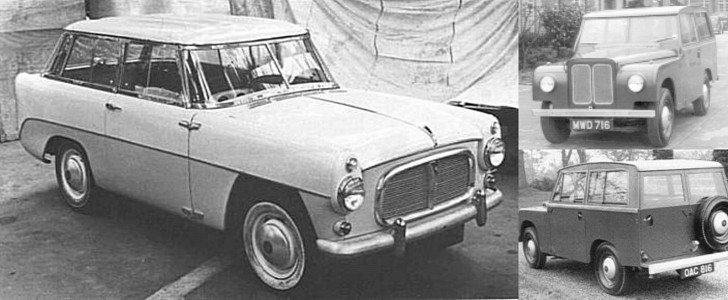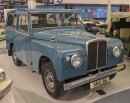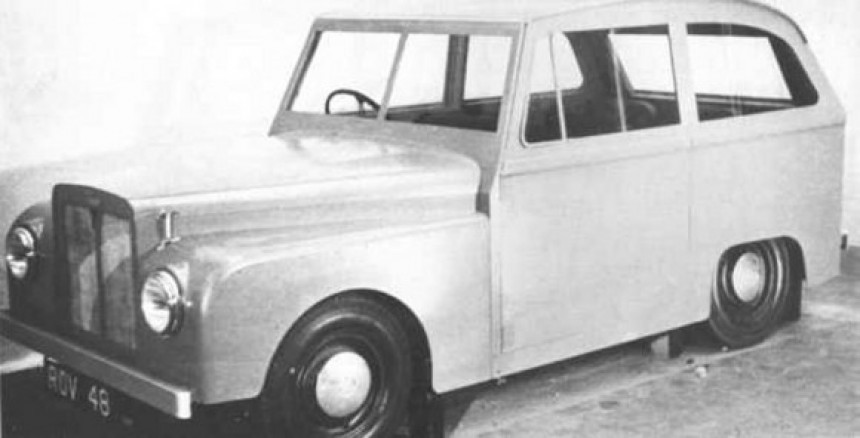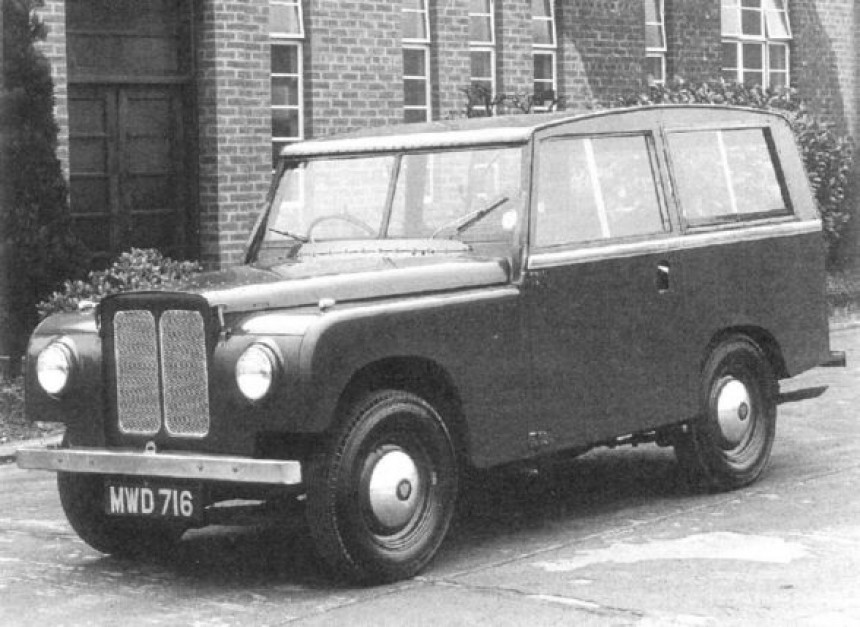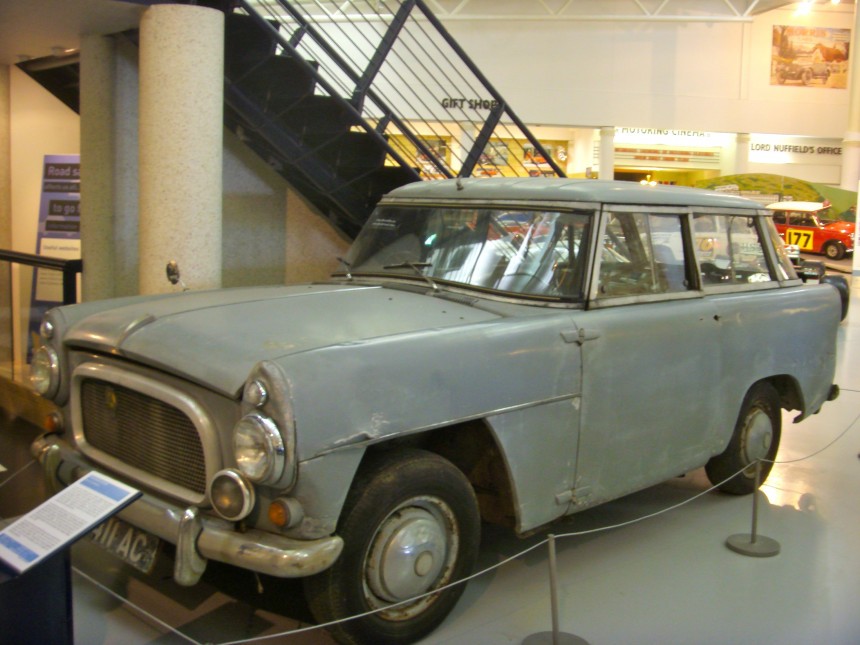It's an automotive formula for success that's tried and true these days. You take underpinnings of an average car, give it some bulgy SUV body panels, and then sell them to the masses to the tune of mountainous profits.
But crossover SUVs weren't always a surefire sales bonanza. Someone had to have devised the idea for the crossover, but its exact origins are somewhat up for debate. Some pin it down as the AMC Eagle or the VW Golf Country. Or even the Original Rav4, if they're not a walking automotive encyclopedia.
But at least as far as concept cars are concerned, we think we can trace it back even further. Recently, we showed you the history behind the development of the Range Rover, from its many concept phases to what it was in the distant past to what it is today.
Go check out that item if you want to learn more. Now, anyone familiar with off-roaders knows the Classic Range Rover was a no-nonsense 4x4. But in its very early development phase, the story was different.
Charles (Spen) King and his colleague Gordon Bashford were the men responsible for what the Range Rover would eventually become. All while under the leadership of the brothers Maurice and Spencer Wilks, the founders of Land Rover.
During the mid-to-late-60s, the two were tasked with making a vehicle platform that was more refined than the rugged Series edition Land Rovers. This would end up being a challenge that was more difficult than anyone could have imagined.
It needed to be spacious, economical, and suited for more than just satisfying rugged rural types with its tractor-like work ability. It needed to be just as comfortable in the city as it was on the trail. In the days before modern automotive production practices were established, there were a few ideas on how to achieve this.
Under the direction of the Wilkes brothers, King, and Bashford, the Road Rover prototype was born. The design underwent so many changes in its day that it's genuinely difficult to keep track of everything. From what we can gather, the very first Road Rover was based on a Rover sedan chassis for a more refined driving experience in cities, towns, and highways.
This first Road Rover is distinguishable by its gigantic and Rolls-Royce-like front grille. Long travel coil suspension allowed the rear-wheel-drive platform to have some limited off-roading ability, but it was still a far cry from the purpose build 4x4s Land Rover was becoming known worldwide for.
Even so, this Series I Road Rover prototype sported all the same crossover SUV functionality that wouldn't take the world by storm for another five decades or so. The tall body with one door on either side could accommodate space for back seats or a positively cavernous trunk. With a front fascia that looked more like a Jaguar or a Bentley than a Land Rover, it's very possible it could be the very genesis of the luxury crossover SUV.
It seemed like the team at Land Rover really did have something revolutionary on their hands. A bit rough around the edges, of course, but in all truth, their design did make complete sense. But, it seemed Land Rover was quite happy to focus on their bread and butter Series edition Land Rover than waste time and money on something they weren't sure would even sell, the shortsighted fools.
Even so, R&D on subsequent improvements to the Road Rover design continued to roll in at a trickle instead of a flood. It s started with touch-ups to the exterior styling of the Mark I Road Rover, including a split front grille arrangement in the place of the single-piece design seemingly ripped off straight from a Jaguar.
By the time it was evident that the original Road Rover had reached its developmental apex, the Series II was ready for testing. That's right, folks, two generations of prototypes later and still not a single production car to show for it. Even so, the Series II Road Rover looked even closer to the true to form crossover SUV we're all so familiar with.
The same basic front-engined, rear-drive layout from the Series I Road Rover remains on the Series II. Safe to say when it comes to modern greats like the Honda CRV Toyota Rav4, and Nissan Rogue, each one of them owes a little bit of their DNA to the work of Rover Group long before many of us were even born. Never mind that the Road Rover was rear wheel drive, unlike a Honda or Toyota. Just look at the thing! It's as if the CRV was designed over 50 years ago.
Ultimately, the team would change directions with the Road Rover project, and the result was the Range Rover Classic we all love to this day. That said, you can't exactly call the Road Rover project a failure, either. Stay tuned for more from Land Rover month right here on autoevolution.
But at least as far as concept cars are concerned, we think we can trace it back even further. Recently, we showed you the history behind the development of the Range Rover, from its many concept phases to what it was in the distant past to what it is today.
Go check out that item if you want to learn more. Now, anyone familiar with off-roaders knows the Classic Range Rover was a no-nonsense 4x4. But in its very early development phase, the story was different.
Charles (Spen) King and his colleague Gordon Bashford were the men responsible for what the Range Rover would eventually become. All while under the leadership of the brothers Maurice and Spencer Wilks, the founders of Land Rover.
It needed to be spacious, economical, and suited for more than just satisfying rugged rural types with its tractor-like work ability. It needed to be just as comfortable in the city as it was on the trail. In the days before modern automotive production practices were established, there were a few ideas on how to achieve this.
Under the direction of the Wilkes brothers, King, and Bashford, the Road Rover prototype was born. The design underwent so many changes in its day that it's genuinely difficult to keep track of everything. From what we can gather, the very first Road Rover was based on a Rover sedan chassis for a more refined driving experience in cities, towns, and highways.
This first Road Rover is distinguishable by its gigantic and Rolls-Royce-like front grille. Long travel coil suspension allowed the rear-wheel-drive platform to have some limited off-roading ability, but it was still a far cry from the purpose build 4x4s Land Rover was becoming known worldwide for.
It seemed like the team at Land Rover really did have something revolutionary on their hands. A bit rough around the edges, of course, but in all truth, their design did make complete sense. But, it seemed Land Rover was quite happy to focus on their bread and butter Series edition Land Rover than waste time and money on something they weren't sure would even sell, the shortsighted fools.
Even so, R&D on subsequent improvements to the Road Rover design continued to roll in at a trickle instead of a flood. It s started with touch-ups to the exterior styling of the Mark I Road Rover, including a split front grille arrangement in the place of the single-piece design seemingly ripped off straight from a Jaguar.
By the time it was evident that the original Road Rover had reached its developmental apex, the Series II was ready for testing. That's right, folks, two generations of prototypes later and still not a single production car to show for it. Even so, the Series II Road Rover looked even closer to the true to form crossover SUV we're all so familiar with.
Ultimately, the team would change directions with the Road Rover project, and the result was the Range Rover Classic we all love to this day. That said, you can't exactly call the Road Rover project a failure, either. Stay tuned for more from Land Rover month right here on autoevolution.
